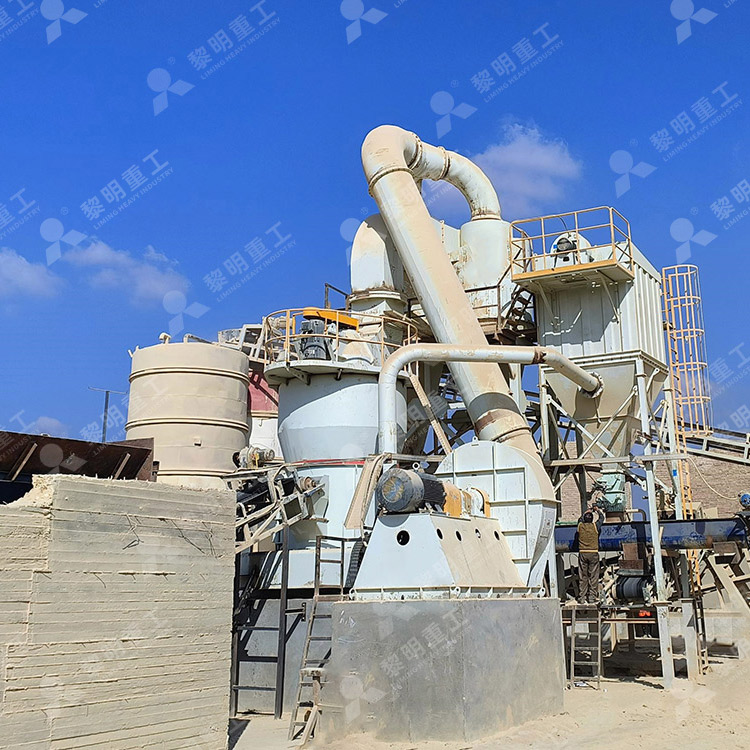A Key to Precision and Efficiency in Industrial Applications
In the vast landscape of industrial minerals, heavy calcium carbonate (GCC) stands as a pillar of versatility, finding indispensable roles from plastics and paints to sealants and pharmaceuticals. However, the true value of GCC is unlocked only when it is processed to a specific, fine particle size. Among these specifications, the 325 mesh (approximately 45 microns) grade is one of the most universally demanded. Achieving this precise fineness efficiently and reliably is the primary function of the 325 Mesh Heavy Calcium Carbonate Grinding Mill. This machine is not merely a grinder; it is a sophisticated engineering system designed for precision, productivity, and powder quality optimization.
1. Understanding the 325 Mesh Standard and Its Importance
The term "325 mesh" originates from the sieve analysis method, where it refers to a screen having 325 openings per linear inch. Powder that passes through this sieve has a maximum particle size of about 44 microns. GCC ground to this fineness offers a perfect balance of properties:
High Surface Area: Provides excellent reinforcement and whiteness in plastics and rubber.
Good Opacity and Spacing: Acts as a functional filler in paints and coatings, improving coverage and durability.
Smooth Texture: Imparts desired tactile properties in papers and personal care products.
A grinding mill dedicated to producing this specific grade ensures consistency, which is paramount for downstream industrial processes and final product quality.
2. Types of Grinding Mills for 325 Mesh Heavy Calcium Carbonate
While several mill types can achieve a 325 mesh grind, some are far more efficient and cost-effective than others for GCC.
Raymond Mill (Vertical Roller Mill): This is the most traditional and widely used technology for this application. It operates on the principle of pendulum-style grinding rollers crushing the material against a stationary grinding ring. Modern Raymond Mills are highly efficient for 325 mesh production, offering excellent energy economy, reliability, and ease of maintenance. They are often the go-to solution for large-scale production with a moderate investment.
Ultra-fine Grinding Mill (Ring Roller Mill): For producers aiming for higher value-added products or needing to easily adjust fineness beyond 325 mesh (e.g., up to 800 mesh or finer), this is the ideal choice. It employs a multi-layer grinding ring and roller system to achieve more intensive grinding action. Although the initial cost may be higher, its ability to produce a tighter particle size distribution and higher fineness makes it a future-proof investment.
Ball Mill: A classic workhorse in mineral processing, ball mills are capable of producing 325 mesh GCC. However, they are generally less energy-efficient for this specific task compared to Raymond or Ultra-fine Mills. They are often used in scenarios where the raw material is already relatively fine or as part of a more complex processing circuit.
3. Key Technological Features of an Optimized 325 Mesh GCC Mill
A modern, high-performance mill is defined by a suite of advanced features:
Integrated Classifier System: The heart of precision grinding. An internal or external classifier (often turbo-type) continuously separates particles. Those that meet the 325 mesh specification are conveyed out as the final product, while oversize particles are recycled back to the grinding chamber for further processing. This closed-loop system guarantees a consistent and narrow particle size distribution.
Dust Collection and Sealing: To achieve a high-purity product and ensure an environmentally friendly operation, pulse-jet baghouse dust collectors are integral. Advanced sealing technologies prevent powder leakage, protecting both the equipment and the workplace.
Automated Control Systems: Modern mills are equipped with PLC (Programmable Logic Controller) systems. They allow for centralized control of the entire grinding process, including start-up, shutdown, and real-time monitoring of parameters like feeding rate, grinding pressure, and temperature. This automation maximizes stability, reduces labor costs, and minimizes human error.
Wear-Resistant Materials: The grinding components (rollers, rings, liners) are subject to constant abrasion. They are manufactured from high-chromium or ceramic composite materials, significantly extending service life and reducing maintenance downtime and the risk of iron contamination of the product.
4. The Broader Impact: From Raw Stone to Value-Added Product
The role of the 325 mesh grinding mill extends far beyond simple size reduction. It is a critical value-adding link in the GCC supply chain. By transforming crude limestone into a precisely engineered powder, it enables countless downstream industries to enhance their product performance. A reliable mill ensures a stable supply of high-quality filler, which directly influences the strength, brightness, and cost-effectiveness of plastics, the opacity and weatherability of paints, and the smoothness and printability of paper.






